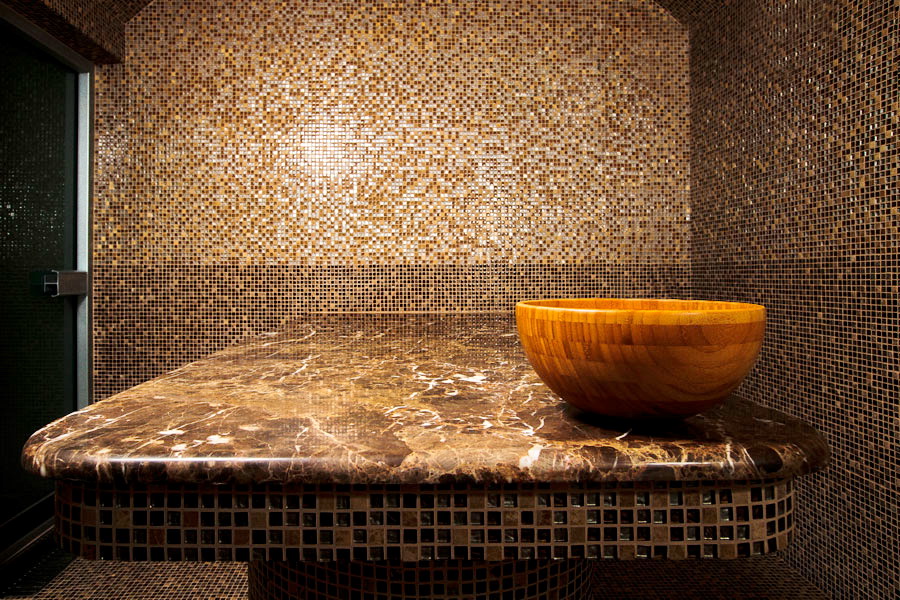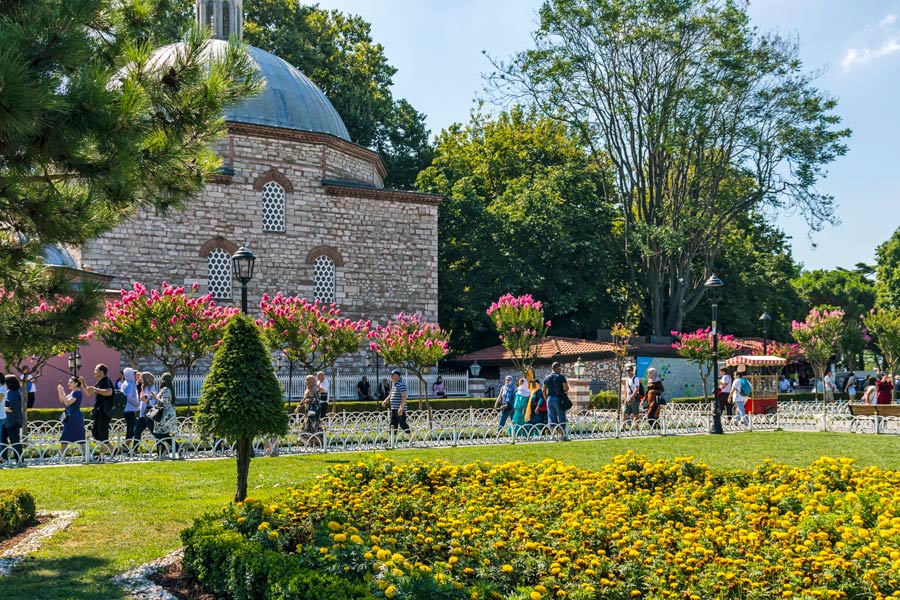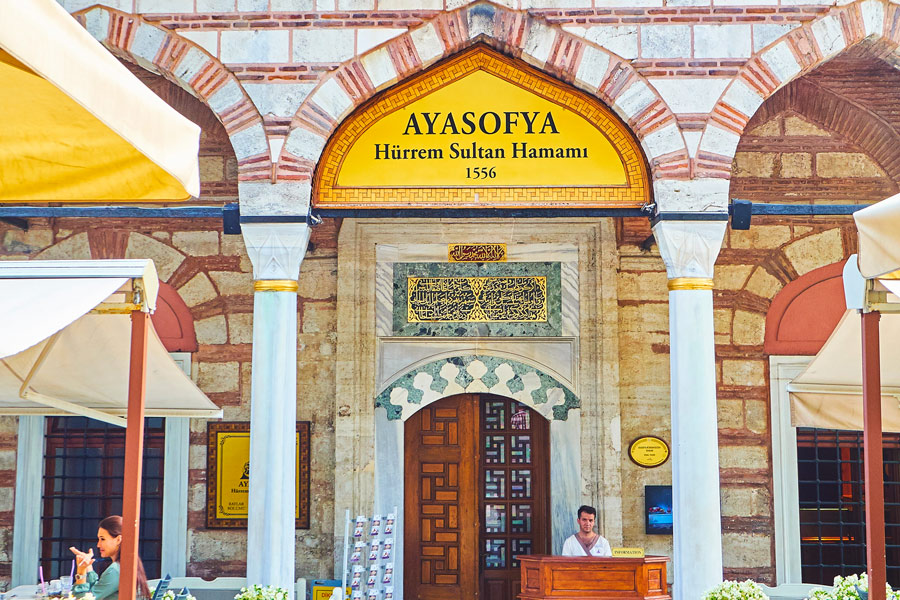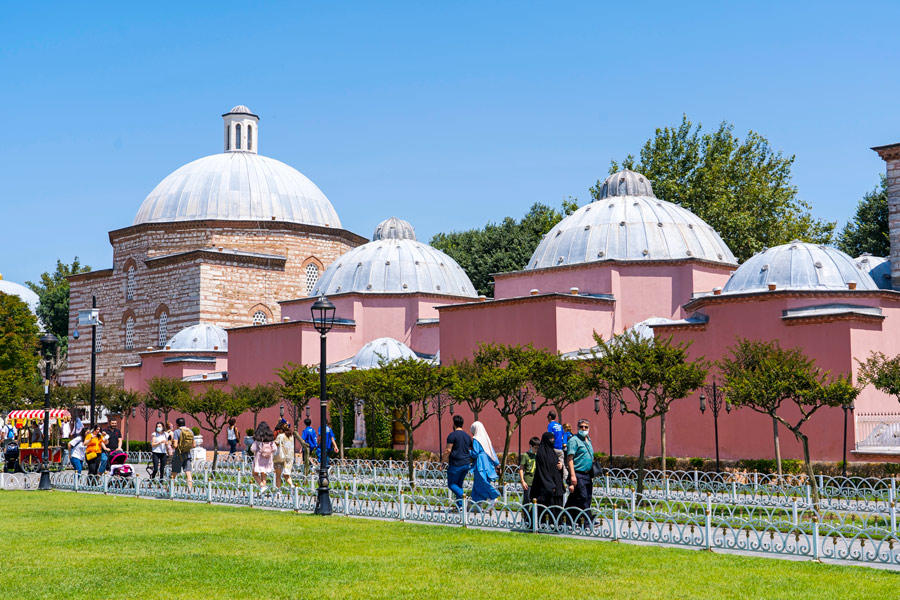You might have always asked yourself: what is a hammam? Where does this term come from, and what does it have to do with Turkish baths?
A hammam (hamam), frequently referred to as a Turkish bath, is a public bath, typically associated with the Islamic world. These facilities played a vital role in Middle Eastern societies as a means to promote public health and hygiene, as well as a place to socialise and spend spare time.
The process of bathing itself involves a steam session, followed by a vigorous scrub and massage, helping to cleanse the skin and promote relaxation. For those seeking a holistic wellness experience, hammams are increasingly popular in medical tourism. Nowadays, many spas and wellness centres in Turkey (Türkiye) offer hammam treatments as part of a comprehensive health and rejuvenation package, making it an ideal destination for those seeking both leisure and medical benefits.
The Origins of Hammams, or Turkish Baths

The history of hammams goes well beyond the years we can imagine. The whole model is taken from the Roman Thermae. However, in the Muslim context, these facilities – found across the Middle East, North Africa, Central Asia, and even Southeastern Europe – held a religious meaning too. More specifically, it was a perfect place for purification rituals. Moreover, before modern plumbing systems were invented, people usually went to hammams to bathe. These gendered public establishments were where people mostly socialised and relaxed.
Why Are Hammams Also Called Turkish Baths?
The word “hammam” means a “bath” or a “bathhouse” and comes from an Arabic root word related to heat. From Arabic, it was passed to Persian and later to Turkish. Western writers often associated the word “Turk” with everything that came from the Ottoman Empire. And, since hammams were predominantly present in Ottoman territories, “Turkish Baths” became a widely used phrase associated with hammam spas. Therefore, though not entirely accurate, these two terms are now used almost interchangeably.
From Bathhouses to Hammams
Despite the decline of the Roman traditional public baths, eastern Mediterranean countries kept using the model for many centuries to come. With time came the artistic elements that defined bathhouses. For instance, Byzantine baths had characteristic mosaic floors, and the eighth-century complex in Jordan has intricate paintings on the walls.
Art wasn’t the only progression these facilities encountered. Umayyad baths had no cold rooms in them. To compensate for this, the reception rooms grew in size, but the bathing rooms became smaller. The private baths in these communities were quite lavish, often hosting imperial parties, as they were built as part of a palace, or qasr (Ksar).
Representation of the Turkish Baths in Art
In mediaeval times, the significance of bathhouses grew in public, as they were an important part of their social lives. Authors of the time mentioned hammams in their works. These establishments were often built along the mosques and madrasahs, such as the renowned Hagia Sophia Hammam (Ayasofya Hürrem Sultan Hamamı) in Istanbul, built by the Ottoman architect Mimar Sinan. Their general architecture might have been the same, but the interior details and decorations were rather specific depending on the region. They used to attract many Westerners, especially artists, who would constantly create pieces often depicting women in Turkish baths straight out of their imagination. Interestingly enough, these fantasised enchantresses were mainly absent in hammams at the time. Moreover, their creations were often seen as shocking and controversial by their own contemporaries. They also represented architectural details of these places.
Muslims kept a lot of the original elements of a classic bathhouse in hammams. Although some details changed over time.

Importance of the Hammams in Islam
As already mentioned, unlike the Western bathhouses, hammams also carried religious symbolism. Prayer, which is one of the five pillars of Islam, is done after cleansing rituals. There are two types of ritualistic purification for Muslims, ghusl (ritual purification) and wudu (ablution) – a full-body cleansing and washing only one’s face, hands, and feet. Therefore, it is very logical for a place associated with full-body cleansing to be near mosques or even be a part of the religious complexes. Historical hammams in Istanbul are the Kılıç Ali Paşa Hammam and the Çemberlitaş Hammam.
According to Al-Ghazali, one of the most prominent 11th-century Persian Sufi Muslim theologians, there were rules for conducting ghusl in an appropriate manner. For him, these bathhouses were a place for men to perform ritualistic ablutions and very rarely a place for women to visit. However, practices and access to hammams for women varied across different regions and periods in Islamic history.
Hammams Tradition in Turkish Culture
Over the centuries, hammams have evolved alongside advancements in plumbing and architecture, adapting to the changing needs of society. Over time, many of the services and traditions associated with hammams gradually faded but never disappeared. The majestic, ornate hammams that once held both spiritual and ritualistic significance continue to resonate in modern adaptations in Turkey, preserving a timeless connection to history and tradition.
The Bridal and Groom's Hammam Party
Despite this, Turkey has maintained this culture, and Turkish baths have a few customs linked to them. One of the most important of these traditions is the bridal (gelin hamamı) and groom (damat hamamı) preparation. This ritual is similar to a bachelor’s/bachelorette’s party in Western cultures. Typically, a groom or a bride is taken to a hammam by their close friends and relatives of the same gender on the day before a wedding or even early in the morning on the D-Day.
More than anything, Bridal and Groom’s hammams are a way to socialise and get into the celebratory spirit. The groom and his friends go through the whole purification process and are later invited for entertainment. They play music and card games and relax before an important day ahead. Food is also served to both parties since the process lasts quite some time, and the guests might get hungry. Similarly, a bridal hammam entails ritualistic purification, entertainment, and activities like tossing a gold coin in the basin for prosperity.

Lohusa Hamamı
Turkish hammams are used for other occasions as well. For instance, Lohusa Hammam – celebrating the birth of a baby – is also quite a popular celebration. It is a therapeutic, educational, and entertaining experience for the mother and the newborn. What’s exceptionally lovely about this tradition is that it not only gives immediate female members of the family a chance to celebrate such a beautiful event but also gives the midwife who helped deliver the baby an opportunity to feel included in the celebrations.
Special Days Hammam
Additionally, special days include birthdays, anniversaries, Mother’s Day, Father’s Day, and holidays.


